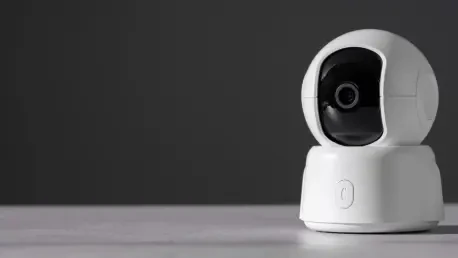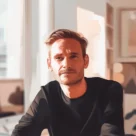The landscape of Internet of Things (IoT) technology, particularly in camera deployment, has seen explosive growth. However, a significant security lapse recently came to light, highlighting the exposure of 40,000 internet-connected cameras across the globe. These cameras, often stationed in critical sites like healthcare facilities, data centers, and industrial factories, have been left accessible to unauthorized individuals due to insufficient security configurations. Many of these IoT devices lack the fundamental protection measures required, such as strong passwords and encryption, offering hackers an open invitation. This situation raises profound privacy and security threats, transforming an otherwise innovative technological advancement into a potential liability. Despite extensive warnings, many cameras still rely on default credentials, significantly increasing the risk of unauthorized access. The repercussions of such vulnerabilities are felt worldwide, from the United States to regions in Europe and Asia, indicating that the issue is indeed a global one.
Global Impact and Systemic Weaknesses
This widespread exposure of IoT cameras paints a vivid portrait of a global privacy crisis, underscoring systemic weaknesses in IoT security protocols. The United States is a considerable hotspot, but vulnerabilities extend far beyond its borders. Regions in Europe, Asia, and other parts of the world are equally beleaguered by this predicament, manifesting as a universal challenge rather than a regional anomaly. The crux of this issue lies in the systemic failures stemming from manufacturers’ tendencies to prioritize cost efficiency and ease of use over robust security measures. Cost-effective solutions are frequently marketed as user-friendly plug-and-play options, leaving significant security gaps in their wake. This lack of by-default protection creates an environment ripe for exploitation by cybercriminals, endangering sensitive information and undermining user trust.
The frequency and scale of this exposure emphasize a crucial need for better security practices and standards across the IoT sector. Cybersecurity experts and industry insiders are vocal about the need for enforcing stringent manufacturing standards to mitigate these risks. Specifically, they propose rigorous industry guidelines that require manufacturers to embed unique default passwords and implement automatic firmware updates as a standard. This proactive approach is essential to safeguard these devices from unauthorized access and potential misuse. Addressing such vulnerabilities is not just a matter of technological upgrades but of altering the overall approach towards IoT security by integrating comprehensive protection measures directly into the design phase.
Shared Responsibility and Call to Action
The call to action extends beyond just manufacturers; it encompasses regulatory authorities and users as well. The responsibility falls on regulators to enforce stringent security guidelines that compel manufacturers to adopt these protective measures. Users, from small business owners to large corporations, are equally accountable in safeguarding these devices. Active involvement in securing IoT devices by conducting regular audits, changing default credentials, and segmenting networks to further isolate these devices from potential threats is imperative.
This situation necessitates a collaborative effort across the IoT ecosystem to address and eliminate existing vulnerabilities. A failure to adapt and enforce these changes could lead to severe privacy breaches and compromise the operational integrity of vital sectors like healthcare, finance, and infrastructure. The existing landscape is a stark reminder of the risks involved when technological advancement is not matched by an appropriate increase in security measures. Such circumstances underscore an urgent need for a shift towards security-by-design principles, an approach not limited to manufacturers but encompassing every stakeholder in the IoT ecosystem.
Towards a Secure IoT Future
The proliferation of Internet of Things (IoT) technology, especially in camera usage, has grown remarkably. However, a major security flaw has emerged, revealing that 40,000 internet-connected cameras worldwide are vulnerable. These cameras are strategically positioned in essential locations like hospitals, data centers, and industrial sites but are exposed to unauthorized access due to poor security settings. Many IoT devices are missing critical protections like robust passwords and encryption, making them easy targets for hackers. This oversight poses serious privacy and security risks, turning a promising technological advancement into a looming threat. Despite numerous warnings, a significant number of cameras continue to use default credentials, severely heightening the risk of breaches. The global impact of these vulnerabilities is evident, stretching from the United States to Europe and Asia. It underscores a universal problem, highlighting the urgent need for stronger preventive measures to protect against unauthorized surveillance and data breaches.









